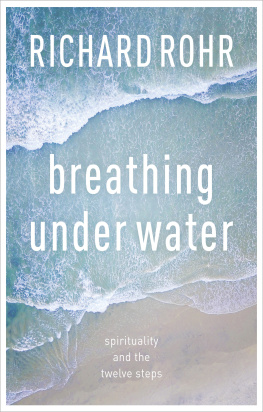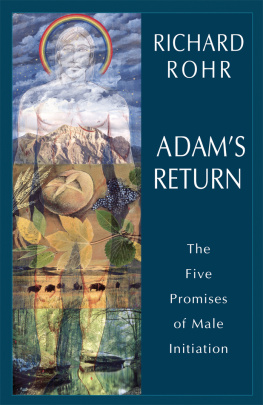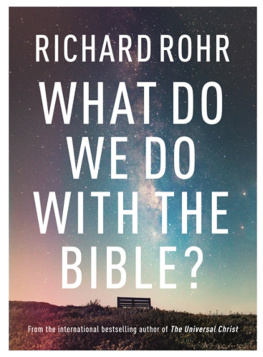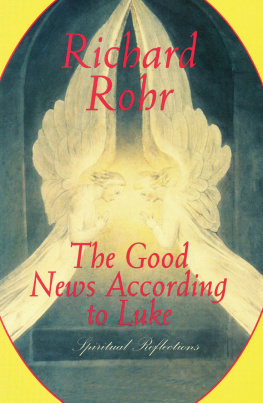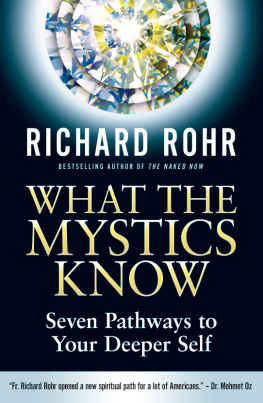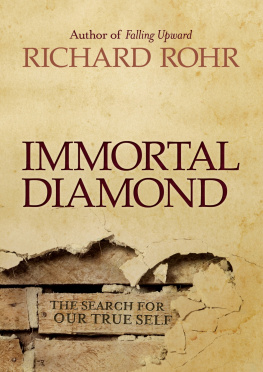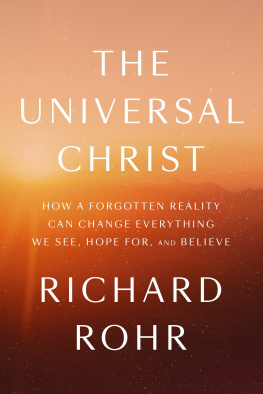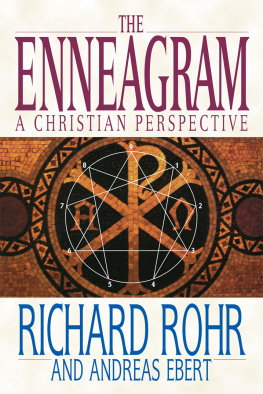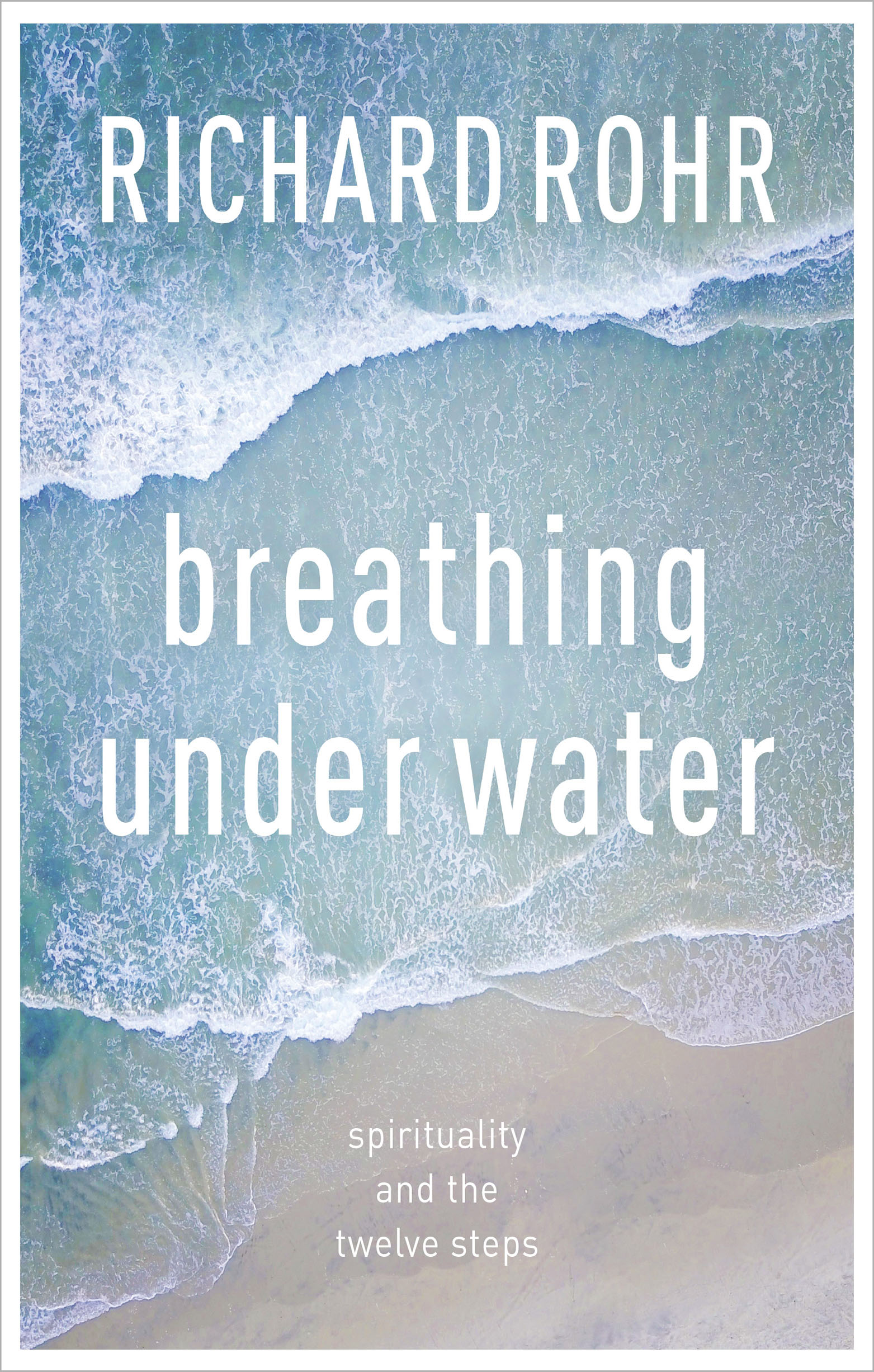
Originally published in the United States of America in 2011by Franciscan Media, Cincinnati, Ohio
First published in Great Britain in 2016
Society for Promoting Christian Knowledge
36 Causton Street
London SW1P 4ST
www.spck.org.uk
Copyright Richard Rohr 2011, 2016
All rights reserved. No part of this book may be reproduced or transmitted in any form or by any means, electronic or mechanical, including photocopying, recording, or by any information storage and retrieval system, without permission inwriting from the publisher.
SPCK does not necessarily endorse the individual views contained in its publications.
The author and publisher have made every effort to ensure that the external website and email addresses included in this book are correct and up to date at the time of going to press. The author and publisher are not responsible for the content, quality or continuing accessibility of the sites.
Scripture quotations are the authors own paraphrase, or his choice from several translations, particularly The Jerusalem Bible, published and copyright 1966, 1967 and 1968 by Darton, Longman & Todd Ltd and Doubleday, a division of Random House, Inc., and used by permission.
British Library Cataloguing-in-Publication Data
A catalogue record for this book is available from the British Library
ISBN 9780281075126
eBook ISBN 9780281075133
Typeset by Graphicraft Limited, Hong Kong
First printed in Great Britain by Ashford Colour Press
Subsequently digitally printed in Great Britain
eBook by Graphicraft Limited, Hong Kong
Produced on paper from sustainable forests
Dedication
This book is written for you.
I did not come for the healthy, but for those who need a doctor.
Jesus (Luke 5:3132)
You see, Alcohol in Latin is spiritus and you use the same word for the highest religious experience as well as for the most depraving poison.
Carl Jungs letter to Bill Wilson in 1961, shortly before Jungs death
These are the only genuine ideas, the ideas of the shipwrecked. All the rest is rhetoric, posturing, farce.
Jose Ortega y Gasset
Almost twenty-five years ago, I gave a set of talks in Cincinnati to link the wisdom of the Twelve Step Program with what St. Francis called the marrow of the Gospel. I was amazed how obvious and easy a task it was, and was surprised this was not equally obvious to everybody involved in either of these fields. So the least I can hope to do here is to make what seems obvious a bit more obvious.
Twelve Steppers sometimes thought they had left the church for the Wednesday night meetings in the basement; and many upstairs in the sanctuary presumed that their higher concerns were something different from those people with problems down below. The similar messages between the two teachings assure me that we are dealing with a common inspiration from the Holy Spirit and from the same collective unconscious. In fact, I am still convinced that on the practical (read transformational) level, the Gospel message of Jesus and the Twelve Step message of Bill Wilson are largely the same message, even in some detail, as I will try to show in this book. (I will frequently quote Bill W as the assigned author of the Twelve Steps and the so-called Big Book of Alcoholics Anonymous, but I am aware there is some doubt as to who exactly wrote what.)
My original lectures were called Breathing Under Water, a title taken from a telling poem by Carol Bieleck, r.s.c.j., which seemed to sum up so much of the common message. I quote it here in full:
Breathing Under Water
I built my house by the sea.
Not on the sands, mind you;
not on the shifting sand.
And I built it of rock.
A strong house
by a strong sea.
And we got well acquainted, the sea and I.
Good neighbors.
Not that we spoke much.
We met in silences.
Respectful, keeping our distance,
but looking our thoughts across the fence of sand.
Always, the fence of sand our barrier,
always, the sand between.
And then one day,
and I still dont know how it happened
the sea came.
Without warning.
Without welcome, even
Not sudden and swift, but a shifting across the sand
like wine,
less like the flow of water than the flow of blood.
Slow, but coming.
Slow, but flowing like an open wound.
And I thought of flight and I thought of drowning
and I thought of death.
And while I thought the sea crept higher, till it
reached my door.
And I knew then, there was neither flight, nor death,
nor drowning.
That when the sea comes calling you stop being
neighbors
Well acquainted, friendly-at-a-distance, neighbors
And you give your house for a coral castle,
And you learn to breathe underwater.3
The original cassette recordings continued to move over the years, eventually became CDs, and morphed into a second set of talks called How Do We Breathe Under Water? done over fifteen years later. People continued to encourage me to put some of these ideas into written form. So, with some added growth and experience, here is my attempt. I hope it can offer all of us some underwater breathing lessonsfor a culture, and a church, that often appears to be drowning without knowing it. But do not despair. What Ortega y Gasset calls the state of mind of the shipwrecked is perhaps a necessary beginning point for any salvation from such drowning.Connecting the Gospel and the Twelve Steps
Although in this book I will first look at the trapped individual, I will also try to point out the very similar parallels in institutions, cultures, and nations. As organizational consultant and psychotherapist Anne Wilson Schaef said many years ago, our society itself shows all the signs of classic addiction. I began to wonder whether addiction could be one very helpful metaphor for what the biblical tradition called sin.
I personally am convinced that is the case, which might be the first foundational connection between the Gospel and the Twelve Step Program. How helpful it is to see sin, like addiction, as a disease, a very destructive disease, instead of merely something that was culpable, punishable, or made God unhappy. If sin indeed made God unhappy, it was because God desires nothing more than our happiness, and wills the healing of our disease. The healing ministry of Jesus should have made that crystal clear; healing was about all that he did, with much of his teaching illustrating the healingsand vice versa. It is rather amazing that this did not remain at the top of all church agendas.
As Carol Bieleck says in her poem, we cannot stop the drowning waters of our addictive culture from rising, but we must at least see our reality for what it is, seek to properly detach from it, and build a coral castle and learn to breathe under water. The New Testament called it salvation or enlightenment, the Twelve Step Program called it recovery. The trouble is that most Christians pushed this great liberation off into the next world, and many Twelve Steppers settled for mere sobriety from a substance instead of a real transformation of the self. We have all been the losers, as a resultwaiting around for enlightenment at gunpoint (death) instead of enjoying Gods banquet much earlier in life.
The Twelve Step Program parallels, mirrors, and makes practical the same messages that Jesus gave us, but now without as much danger of spiritualizing the message and pushing its effects into a future and metaphysical world. By the fourth century Christianity had become the official religion of the Roman Empire, which left us needing to agree on its transcendent truth claims (for example, Jesus is God, God is Trinity, Mary was a virgin, etc.), instead of experiencing the very practical steps of human enlightenment, the central message of our own transformation into the divine nature (2 Peter 1:4), and bringing about a new creation on this earth (Galatians 6:15). It became theory over practice.

